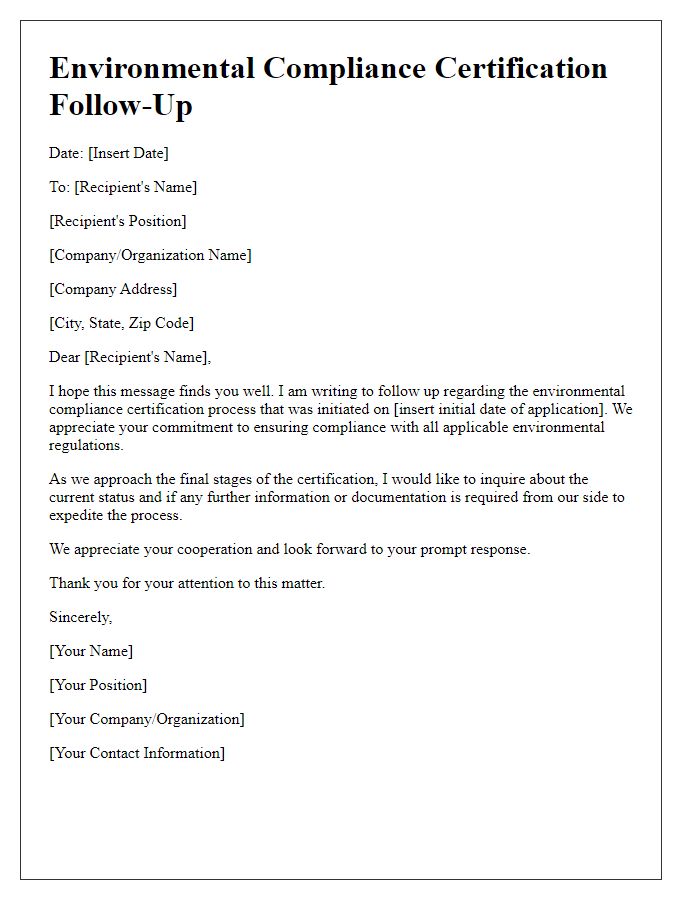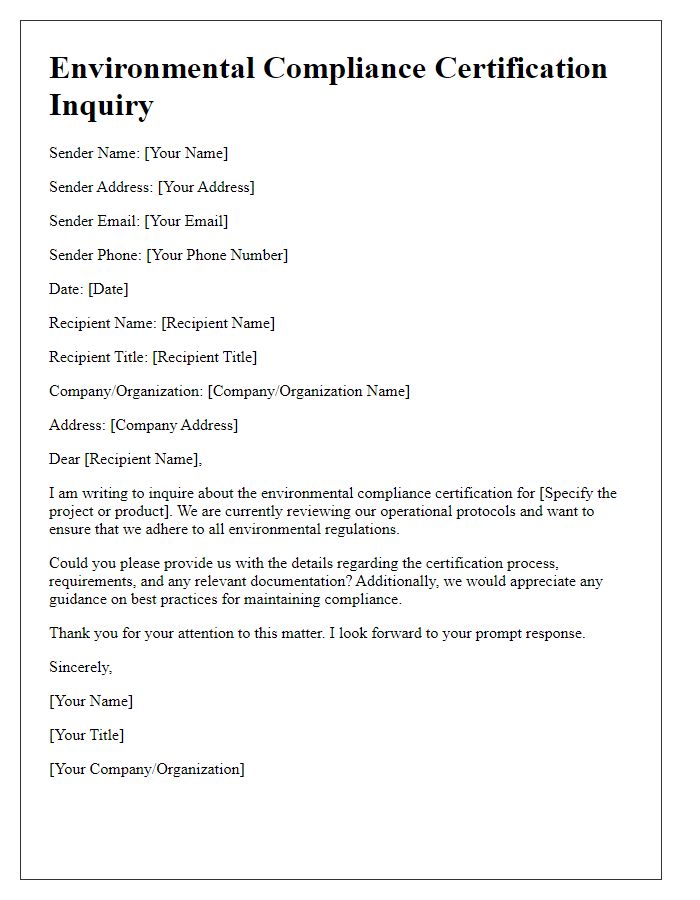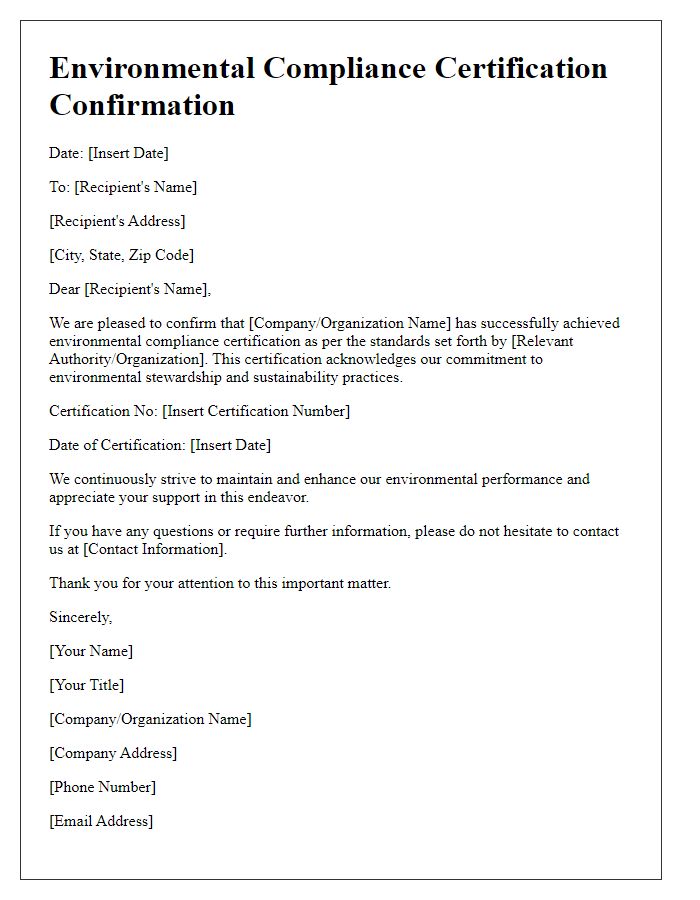Are you looking to navigate the often complex waters of environmental compliance certification? Understanding the requirements and processes can seem overwhelming, but it's essential for ensuring your business operates sustainably and within legal frameworks. This article will break down the key steps in obtaining your environmental compliance certification and highlight the benefits of being certified. Join us as we explore this important topic and invite you to read more for insights that could make your certification journey smoother!

Regulatory Requirements
Environmental compliance certification ensures adherence to various regulatory requirements established by government entities. These regulations often include guidelines from the Environmental Protection Agency (EPA) in the United States, the European Union's REACH (Registration, Evaluation, Authorisation and Restriction of Chemicals) legislation, and the ISO 14001 standards for effective environmental management systems. Companies must meet specific criteria such as waste management protocols, emissions limits (often quantified in parts per million), and resource conservation practices to achieve certification. Violations can lead to significant penalties, affecting both financial standing and public reputation. Ensuring compliance not only fulfills legal obligations but also promotes sustainable practices and corporate social responsibility initiatives, critical for long-term business viability.
Certification Standards
Certification standards play a crucial role in ensuring environmental compliance across various industries. These standards, such as ISO 14001, focus on an organization's commitment to managing environmental responsibilities systematically. The certification process often involves a comprehensive audit of the company's environmental management systems and practices, covering elements like waste management, pollution control, and resource conservation. Regulatory frameworks set by entities like the Environmental Protection Agency (EPA) in the United States further enhance compliance by establishing specific environmental performance criteria. Adhering to these standards not only helps minimize ecological impact but also fosters sustainable development, which can significantly improve an organization's public image and market competitiveness.
Environmental Impact Assessment
Environmental Impact Assessments (EIAs) are crucial for evaluating potential effects of proposed projects on ecosystems and human health. Conducted in accordance with regulations set by governing bodies, such as the National Environmental Policy Act (NEPA) in the United States, an EIA assesses factors like air quality, water resources, land use, and biodiversity. The process typically includes public participation, allowing stakeholders to voice concerns and contribute to informed decision-making. Findings are documented in a comprehensive report, outlining mitigation measures for identified negative impacts. Certifications often require engagement with both local communities and environmental experts to ensure compliance with established environmental standards, such as ISO 14001. Properly executed, an EIA enhances transparency and promotes sustainable development.
Mitigation Measures
Mitigation measures are essential strategies to reduce environmental impacts during project execution, particularly in construction and industry. Implementing measures such as erosion control (utilizing silt fences and sediment basins) and habitat preservation (including buffer zones around wetlands) ensures minimal disruption to local ecosystems. Noise reduction techniques, like the use of sound barriers or scheduling work during off-peak hours, protect nearby communities. Additionally, waste management practices, including recycling materials and proper disposal procedures, maintain compliance with environmental regulations set forth by authorities such as the Environmental Protection Agency (EPA). These comprehensive strategies not only enhance sustainability but also promote social responsibility within project development.
Compliance Documentation
Environmental compliance certification ensures that organizations align with local, national, and international environmental regulations. Key documentation includes an Environmental Impact Assessment (EIA) report, detailing the potential effects of projects on ecosystems, and a Compliance Audit, which examines adherence to relevant laws like the Clean Air Act or the Resource Conservation and Recovery Act. Supporting documents such as waste management plans, pollution control measures, and sustainability reports demonstrate commitment to reducing ecological footprints. Regular monitoring data, including emissions reports and water quality testing results, validate ongoing compliance. Proper certification enhances corporate reputation, reduces legal risks, and fosters community trust, vital for sustainable operations in industries such as manufacturing and construction.
Letter Template For Environmental Compliance Certification Samples
Letter template of environmental compliance certification approval notice













Comments